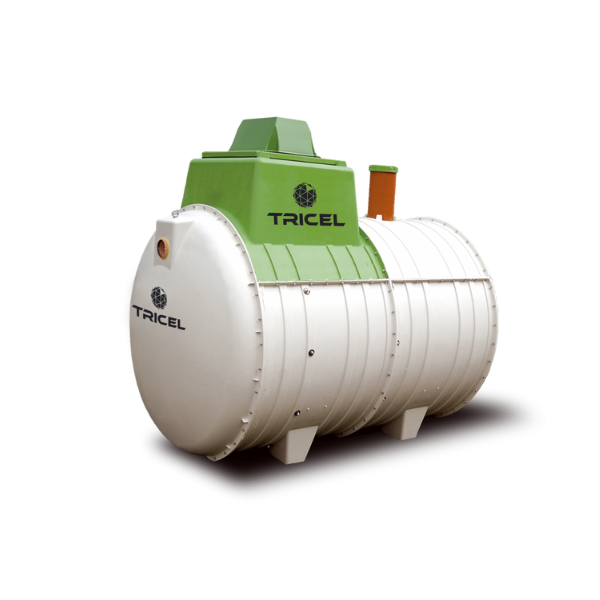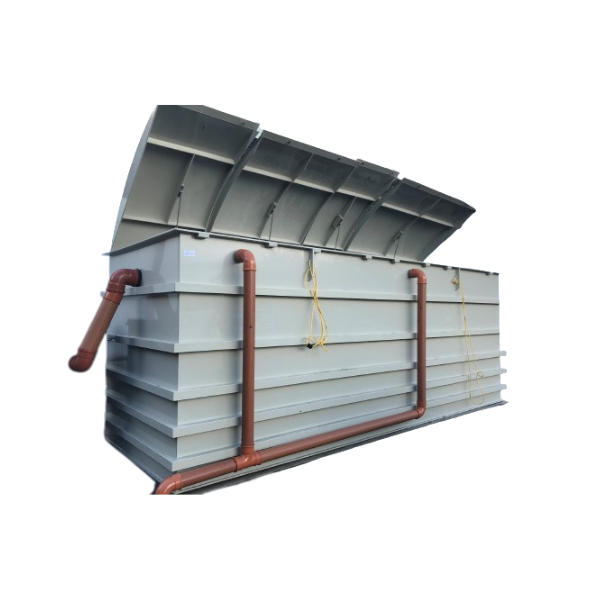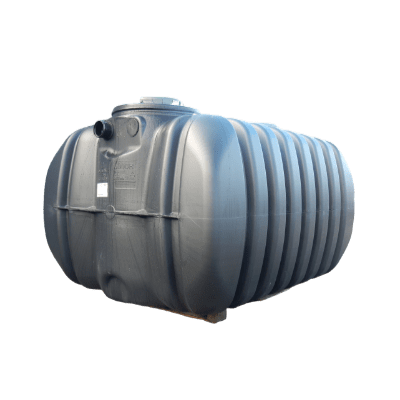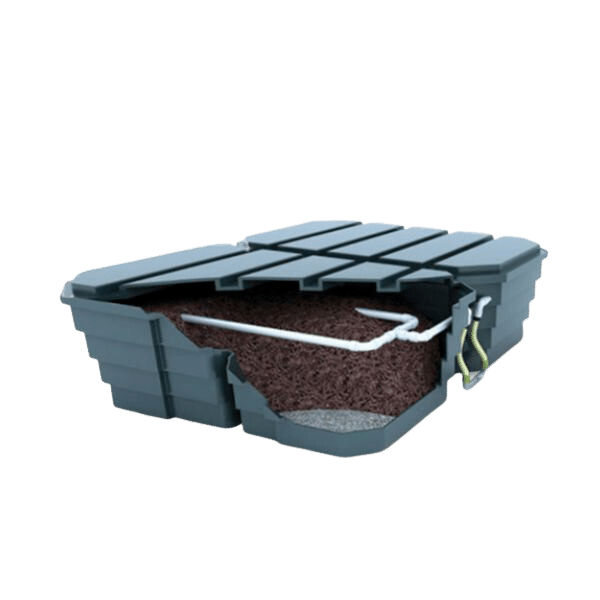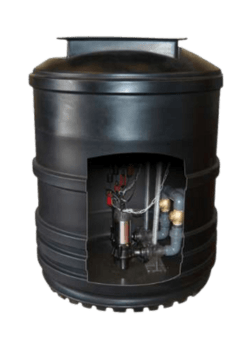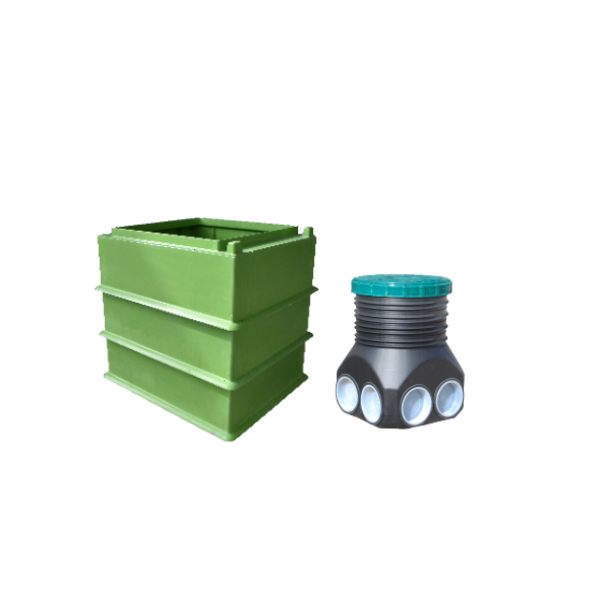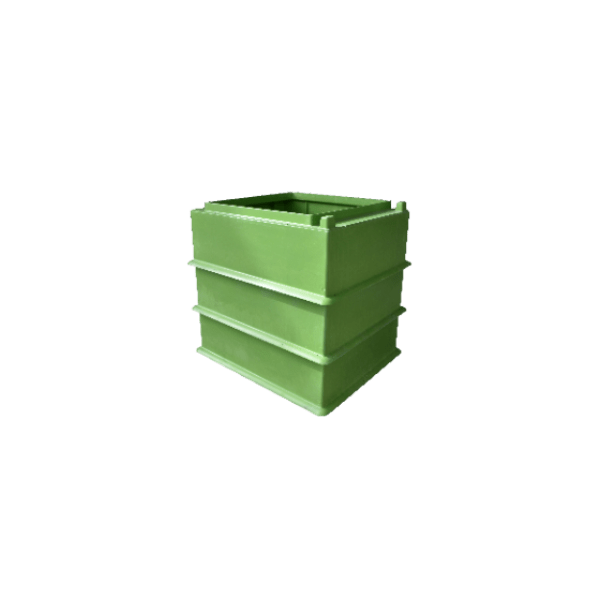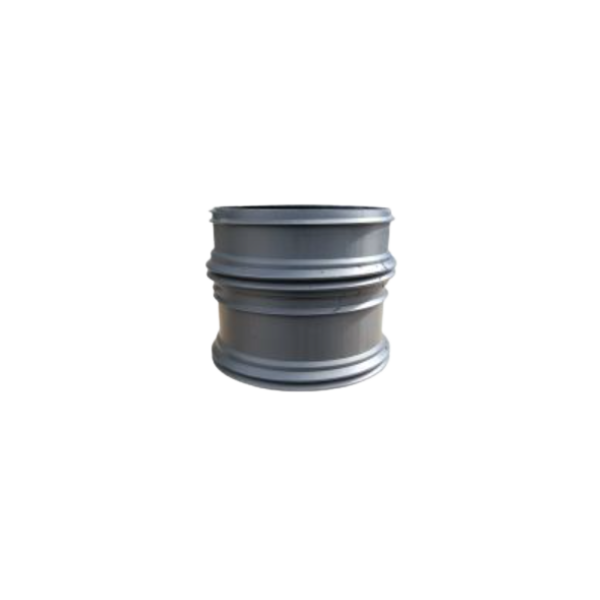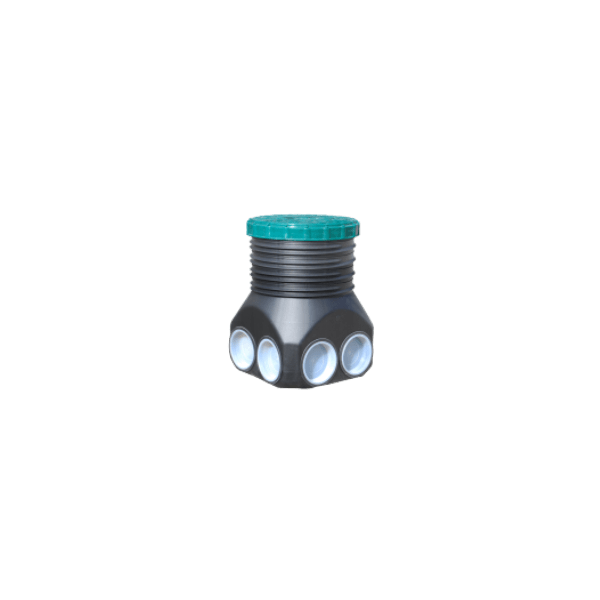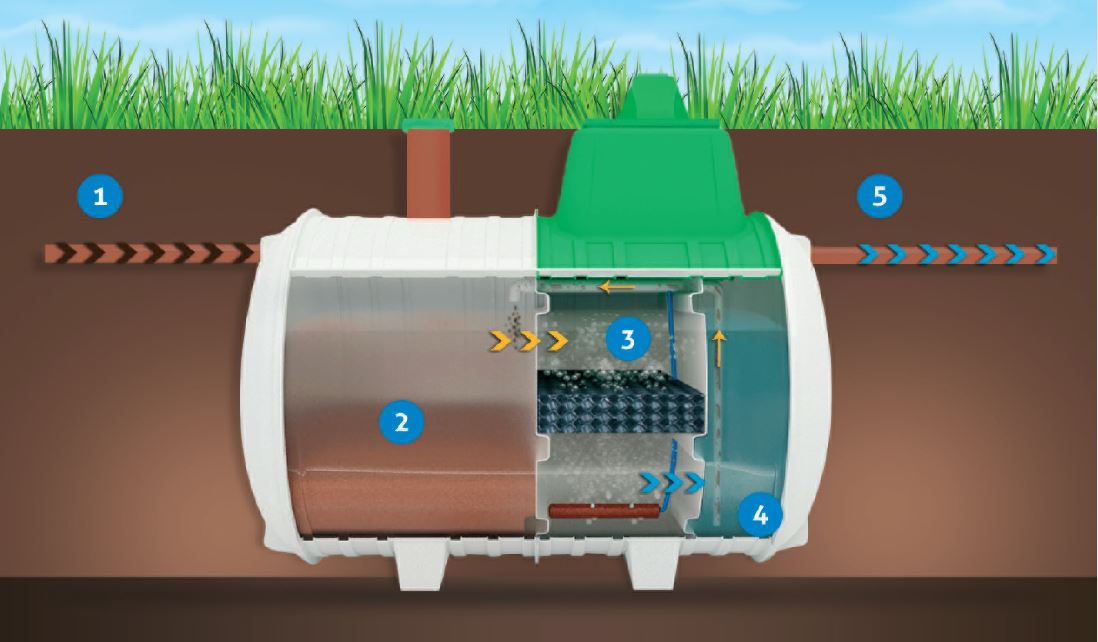FREQUENTLY ASKED QUESTIONS
FAQ - Questions about Sewage Treatment
To speak to one of our agents online, click here
Find below the list of most commonly asked questions regarding sewage treatment systems (FAQ – Questions about Sewage Treatment) and the Tricel range of reliable solutions.
Questions about Sewage Treatment
Click on a section to be redirected.
wasterwater treatment questions
Once the water is discharged, it must either go to a drainage field of slotted brown sewer pipe or into a running watercourse. If it is discharged directly into the ground, then it would fail and block up in a very short space of time, and also it would contravene the government’s General Binding Rules for small sewage discharges.
A wastewater treatment plant treats the wastewater to a better quality, typically 20 times cleaner than a septic tank.
Domestic wastewater is all wastewater generated inside the house, including grey water from sinks, showers, baths and sewage from toilets. Rainwater is not classified as grey water and should be directed to a soakaway.
Yes, a permit should be sought from your local building control department as you may require a ‘consent to discharge’.
The price will vary depending on your project, your site and your requirements. Please contact us and we will contact you to discuss your projects and options.
Yes, Tricel wastewater treatment plants are certified to EN12566-3.
Any treatment plant installed in the UK MUST meet the requirements of EN12566-3 series of standards approved by the European Committed of Standardisation TC165.
The testing process includes water tightness, structural strength, durability and treatment efficiency. Their tests are verified by the National annex.
Tricel Novo are manufactured from GRP that by its nature is a non-corrosive material ensuring strength and longevity. It carries a 20-years warranty on the SMC structure.
All metals used in constructing the tank are stainless steel.
Electrical and electro-mechanical equipment are guaranteed for the period of three years.
Plant equipment and components are specifically designed or chosen to work effectively in the Tricel plant and when used correctly will provide a long lifespan. Guarantee commences from date of purchase.
This is a tricky question because Sewage Treatment Plants are not designed to take animal waste. Another element is the link to the medicines, chemicals and antibacterial products which must not enter the system.
The best thing is for you to contact us and discuss your project. We’ll then be able to advise your next steps.
operational questions
Please refer to our articles about the UK legislation & the 2020 regulations, Regulations in England & Wales and the homeowners responsibilities.
You can also download our ebook.
Finally, our team is there to answer your questions, discuss your project, and do site visits.
- Wastewater enters the plant
- Primary settlement chamber
- Aeration chamber
- Final settlement chamber
- Treated effluent exits the plant
The Tricel sewage treatment plant is a submerged aeration plant. It’s divided into 3 chambers.
First chamber: Settling occurs in the first chamber removing any heavy solids
Second chamber: By supplying oxygen, ideal conditions are created for naturally occurring micro- organisms to grow. These micro-organisms feed on any impurities in the wastewater thus treating it.
Third chamber: Further settlement of finer particles takes place before the treated wastewater exits the plant. These fine particles are returned to the first chamber through a sludge return system.
The required standards are 20:30:20 BOD, SS, NH4
During independent testing Tricel® achieved treatment results of 11:16:9.
Yes, Tricel offers a range of different plants for different options. However, you will need to discuss this with your local council.
Once installed correctly the noise level will not cause nuisance. If standing close to the plant, there is a slight “hum” from the air compressor.
No, once installed correctly and operated within its parameters.
It may take up to 16 weeks for the biomass to become fully established and to reach optimum purification.
A temporary power cut should not affect the plant. It is important to check the plant after a power cut to ensure the plant has restarted.
All you need to do is to convert the watts (of relevant blower) to Kw/hr and then multiply that by tariff (may be day and night rate).
Divide watts by 1000 which gives Kw figure
Multiply that by 24(hrs) to give Kwhours
Deduce costs from your individual tariff
eg: 60w (Tricel Novo UK 6) / 1000 = 0.06Kw per hour x TARIFF.
The Tricel Novo UK6 has a 60w blower, it’s electrical consumption is similar to leaving a similar size lightbulb (60w) on all day and night.
Check our brochure for the details of which air blower is use for which Novo model.
installation questions
The Tricel sewage treatment plant provides a comprehensive installation guide with each plant supplied. You should ensure that you are confident that you can meet requirements outlined in the guide before you attempt installation. Advice on specific site conditions etc. should be sought from your onsite engineer.
A concrete base and surround is not required where site conditions are considered dry.
However if the site is considered wet or where a 500mm/750mm riser is fitted a concrete surround is required.
Your engineer will advise a suitable installation requirement based on your site conditions.
A dry site is one where the water table never rises higher than the base of the Tricel plant.
A wet site is one where the water table may rises higher than the base of the Tricel plant
This may be determined by digging a trial hole and leaving it open for 48 hours during the site assessment. Water level is measured from ground level.
The Tricel Novo must be situated a minimum of 7m from the dwelling and as far away as practically possible considering topography and pipe work levels.
The Tricel Novo should not be installed in an area subject to flooding or excessive water runoff.
The area around the Tricel Novo should be adequately drained, to permanently remove ground water and surface water from the proximity of the tank. The Tricel Novo system is not suitable to be used in water logged sites, where the ground water may rise above the inlet level.
A polishing filter commonly known as a percolation area consists of either soil or sand. The polishing filter further treats sewage from intermittent filters, construction wetland and sewage treatment plant and to allow for discharge of treated sewage to ground.
Depending on your region you may be able to discharge directly into a watercourse or to a percolation area. Please consult your local council for more information on which option is suitable for you.
No, surface water/rainwater should be plumbed separately to the sewage treatment plant.
To maintain efficient operation of your septic tank and WWTP, it’s important that grease, fats and oil are not disposed of down the sink.
It is best practice to install a grease trap prior to your sewage treatment plant or septic tank particularly if sewage contains high levels of grease. A grease trap captures the grease by reducing the flow rate of the water into the plant. The sewage starts to cool down and the grease float to the top of the trap.
It is only recommended that Tricel Novo units have a consistent power supply.
Solar panels will only work with the Novo or any treatment system if there is a main backup or if the solar panels have a battery that ensures a consistent supply of electricity.
It is important:
1) to prevent surface water from entering the tank and overloading the system as this can inhibit growth of the bacteria and could reduce the effluent quality.
2) to prevent water getting into blower housing which can harm the control panel and the air blower.
Learn more about Tricel Novo risers.
maintenance questions
The Tricel sewage treatment plant provides a comprehensive installation guide with each plant supplied. You should ensure that you are confident that you can meet requirements.
When the sludge is occupying 50% of the volume of the primary chamber de-sludging is required. This is when the sludge is 700mm deep. De-sludging intervals depends on use, but is recommended on a yearly basis to prevent the build-up of sludge and should be carried out by a licenced company. Your local councils should have a list of licensed contractors. De-sludging is the responsibility of the homeowner.
Check out this video on how you can desludge your Novo: www.youtube.com/watch?v=MPh_4Cdcjc0
When the sludge is occupying 50% of the volume of the primary chamber (No 1 on the drawing below) de-sludging is required, this is necessary when the sludge is 700mm deep.
View video: How do sewage treatment plants work
De-sludging is a critical part of the successful operation of the Tricel Novo and is the responsibility of the customer. Only competent approved personnel should carry out de-sludging.
Please refer to our manual, and take guidance going forward from a registered and licensed waste carrier.
Read more about Sludge Removal.
After emptying (desludging) a Tricel Novo wastewater treatment plant, the primary settlement chamber (1 on the illustration below) must be filled back with water immediately until level with the aeration chamber.
During desludging, only the sludge is removed and end chambers must be left full.
More information on our dedicated page.
Yes, the alarm will sound to alert a fault in the air compressor or the discharge pump. This does not replace the need for regular inspections.
You should have a full service on your Tricel Novo once a year.
Every service should be carried out by a suitably trained professional. This will guarantee the efficiency of the plant is maintained.
Check out this video on how you can desludge your Novo: www.youtube.com/watch?v=MPh_4Cdcjc0
We recommend that the following are inspected by your engineer during the service of your Tricel Novo.
- Sludge return
- Functionality of blower and / or pump
- Pump pressures
- Pump filters
- Pump diaphragm
- Alarm
- Ventilation functionality
- Diffuser monitored to check for dispersion of air
- Tricel covers and locks
- Manifold adjusted
If the alarm is beeping, it indicates one of the following:
- Air return pipe to the alarm not returning an air signal.
- Electrical fault.
- The electrical panel is wet.
- The compressor does not detect enough back pressure from the diffuser (for example, there is not enough water in the middle chamber, or there is damage to the air hose or fitting)
- The compressor needs maintenance.
In all cases, you should call our office or one of our recommended maintenance companies.
On SepticsDirect website you will be able to order a range of organic septic tank maintenance products like the SeaChem products. They are designed specifically to give your septic tank a natural boost and replenish the bacteria which grows in your tank to break down effluent.
These products will keep your septic tank healthy and can help reduce odours which can stem from a malfunctioning septic tank.
MANUALS & SPECIFICATIONS
View and download our brochure and technical information
CONTACT US
Arrange a callback or email enquiry
